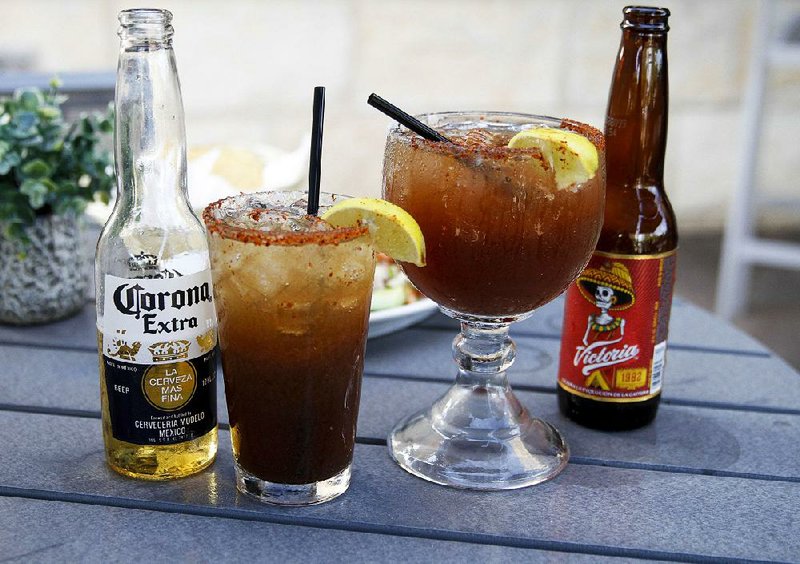DALLAS -- Most people think of the michelada cocktail as a bloody Mary made with beer instead of vodka. But that's not just a lazy comparison -- it's wrong.
The michelada originated in central Mexico, and its conception is one of classic necessity, according to David Wondrich, a Brooklyn-based cocktail writer and historian.
"There's a Mexican tradition of what they call cerveza preparada," which refers to a beer that's augmented or tampered with, Wondrich says. "It goes back to at least the 1940s, and there'd be things like lime juice and hot sauce and stuff like that, but they were all pretty simple."
Then in the 1970s, a man named Michel Esper Jorge shook up the scene. Esper Jorge was a civil engineer who showed up to a tennis match at the Club Deportivo Pototosino in San Luis Potosi, Mexico, with a hangover. Naturally, he went to the bar for a remedy, says Wondrich, who has traced the story through newspaper archives, books and interviews.
The bartender gave Esper Jorge a glass with ice, a beer and lime juice. Once he had combined the ingredients and added a few condiments, the bartender asked what he was drinking.
Esper Jorge called it a "michelada," presumably combining his name with helada, the Spanish word for "frosty."
From there, the drink spread through Mexico and eventually into Texas, when a native of San Luis Potosi opened a torta restaurant in Austin with a house michelada on the menu, Wondrich says. But the drink didn't catch fire until the 1990s, when Texas and the rest of the southwest began thirsting for the cocktail. It's now a menu regular from Big Bend National Park to Canada.
But what most people don't understand about this libation is that it isn't defined by the use of tomato juice or clamato (a blend tomato concentrate and clam broth). That's optional, says Edna Lopez, general manager of Cinco Tacos Cocina and Tequila restaurant in North Dallas.
A michelada is defined as a beer on ice, mixed with lime juice and a special sauce known as petro, which is a blend of Maggi sauce, hot sauce and other seasonings, such as Tajin. (Petro is short for petroleo and so named for the black color of the sauce.)
"In the north of Mexico -- Monterrey, Sinaloa -- normally we don't use clamato. It's just straight salsa de petro, lime juice and beer," says Lopez, who grew up in Sinaloa, a coastal state in northern Mexico, where micheladas were staples of beach culture and cuisine. "But it tastes very, very good with clamato, too. Particularly, I like it with just a little bit of clamato."
Every bar and restaurant has its own recipe and approach to making a michelada. At Cinco Tacos Cocina and Tequila, guests can order the drink con (with) or sin (without) clamato -- always over ice -- and either way, it's an excellent accompaniment to any of the restaurant's ceviches. At Salsa Limon, the michelada mix is prepared before it's sent to the restaurant's five locations in Fort Worth and Dallas.
Most places serve micheladas with a choice of Mexican beer, such as a Modelo, Corona, Pacifico or Dos Equis, which guests add to the glass for their desired ratio of beer and mix.
During my research, I tried one michelada made with a local craft beer and found that Mexican lagers offer a better canvas for the cocktail's star ingredient -- the spicy sauce. The result is a wonderfully refreshing and bubbly beverage that's flavorful and thirst-quenching.
"It's not a meal," Wondrich says. "The bloody Mary has become a meal in a glass."
Style on 10/23/2018
